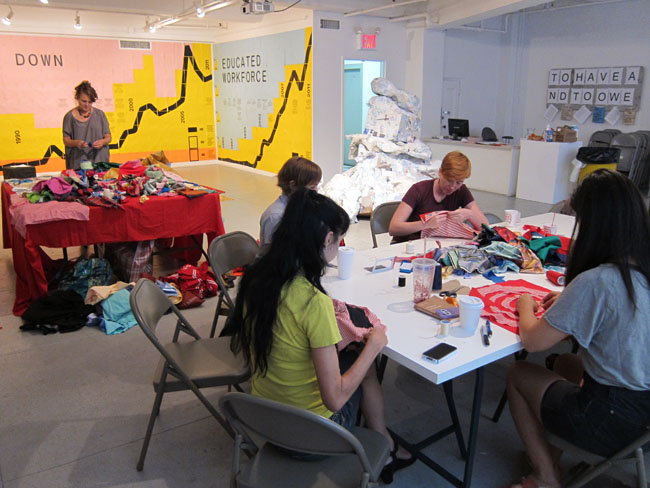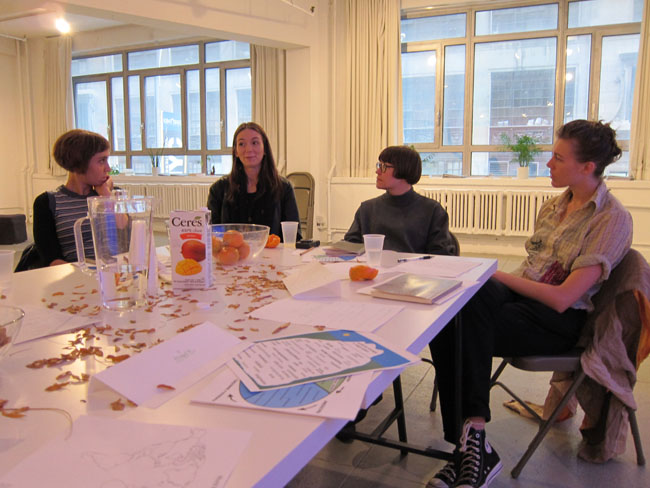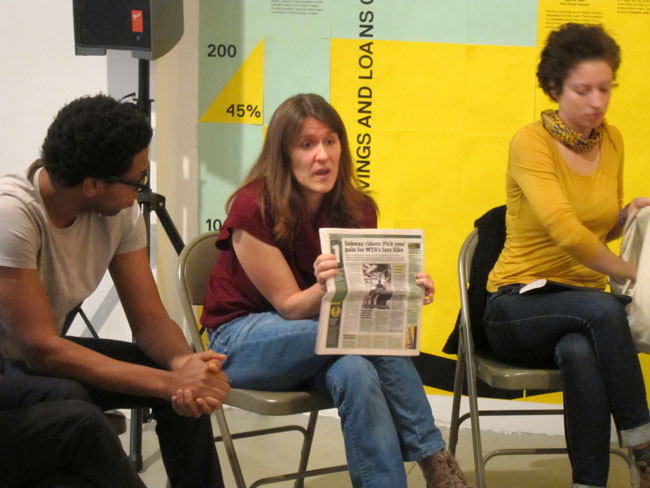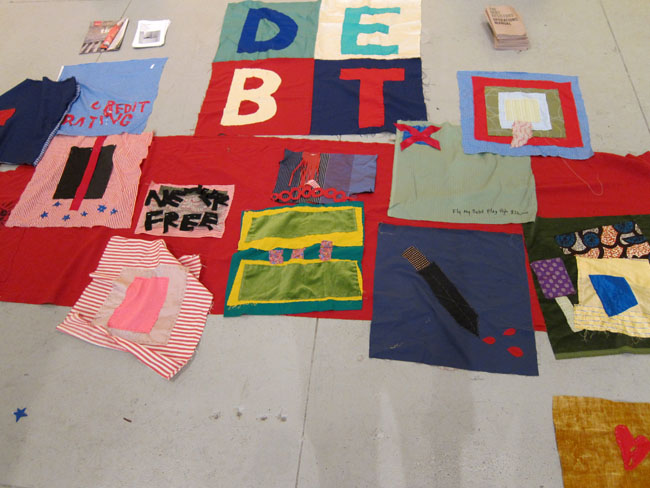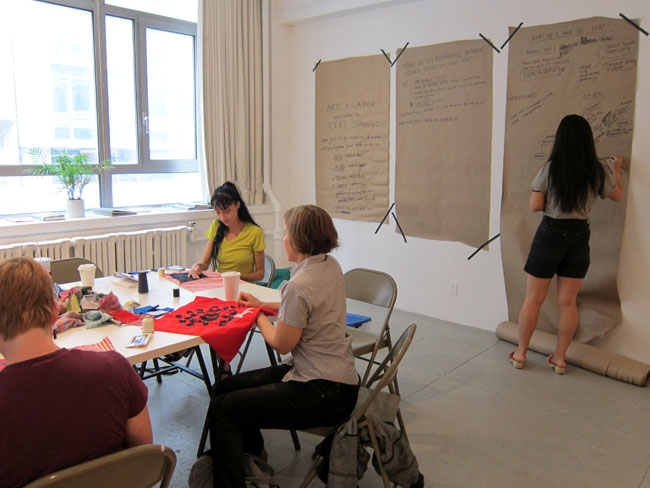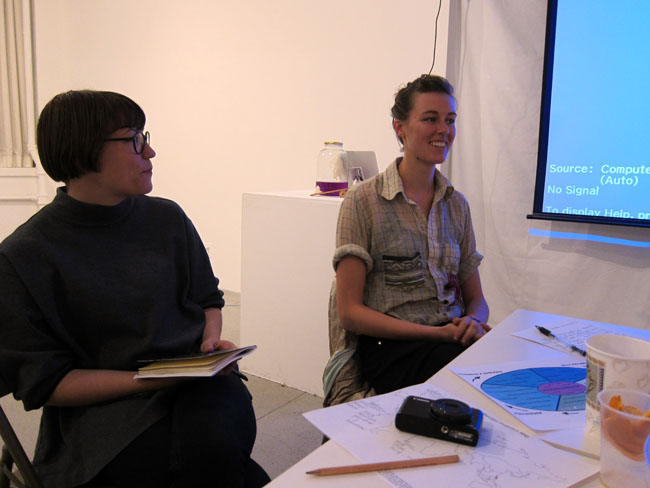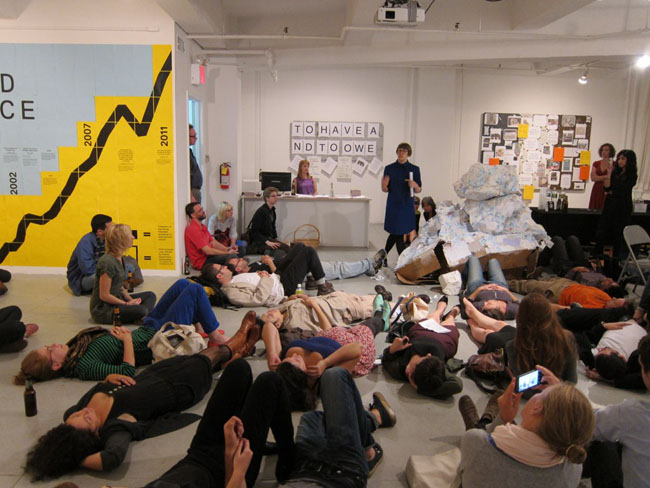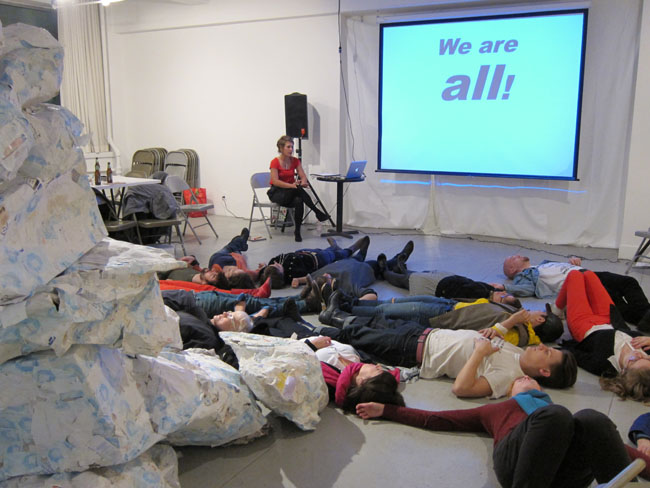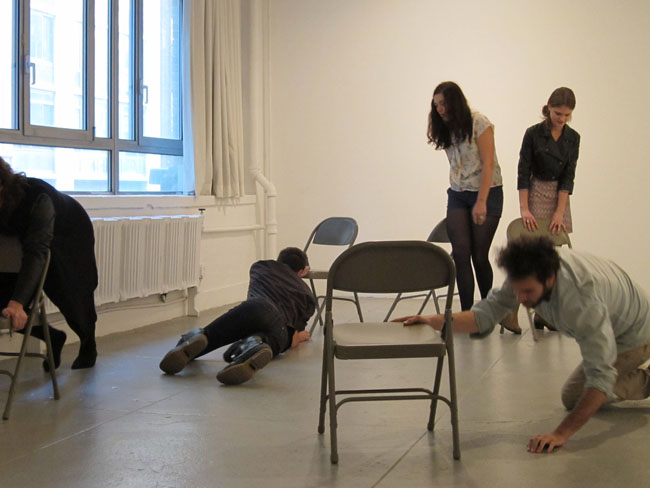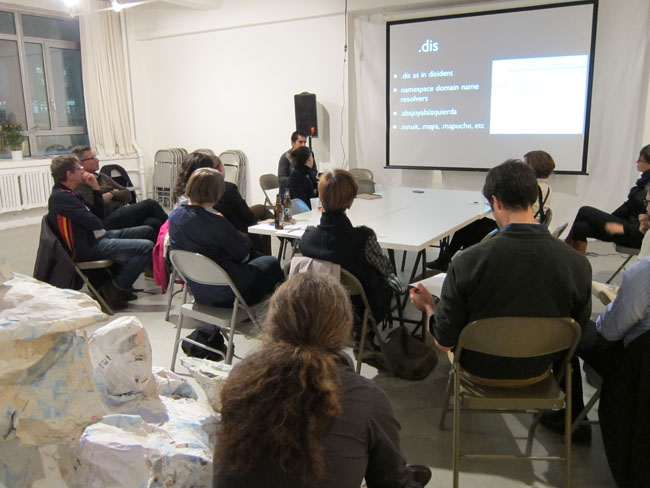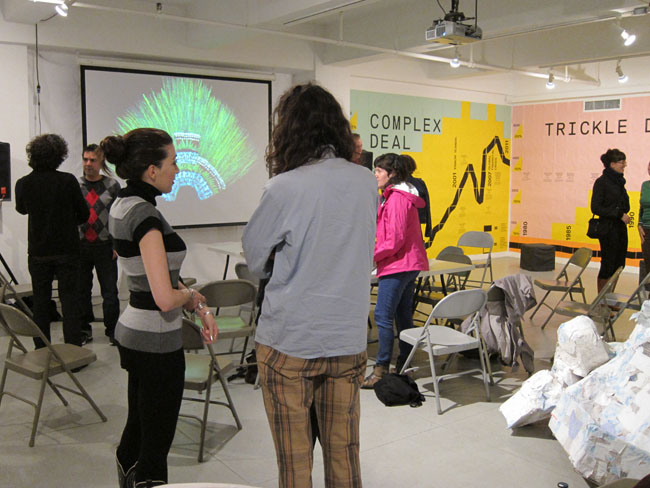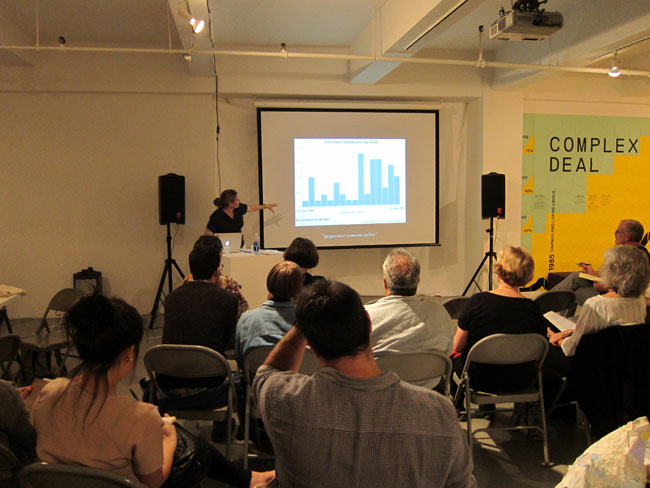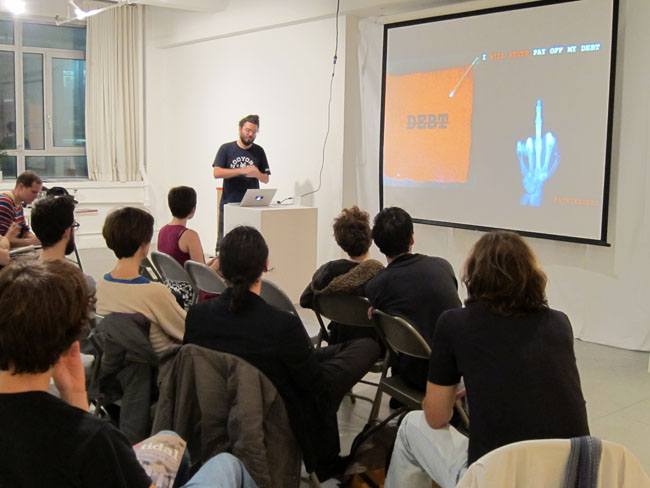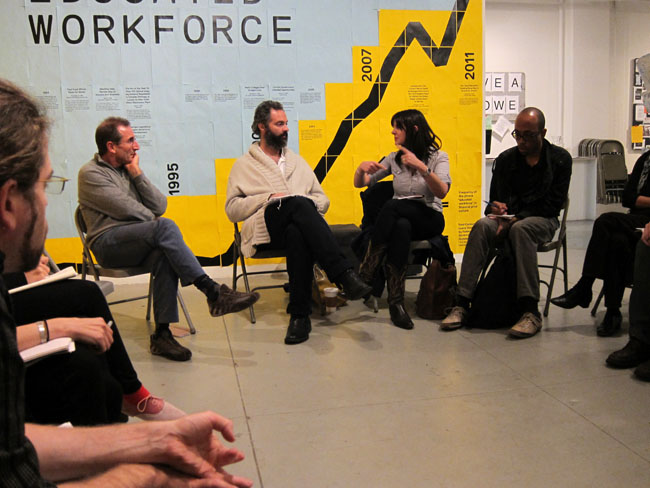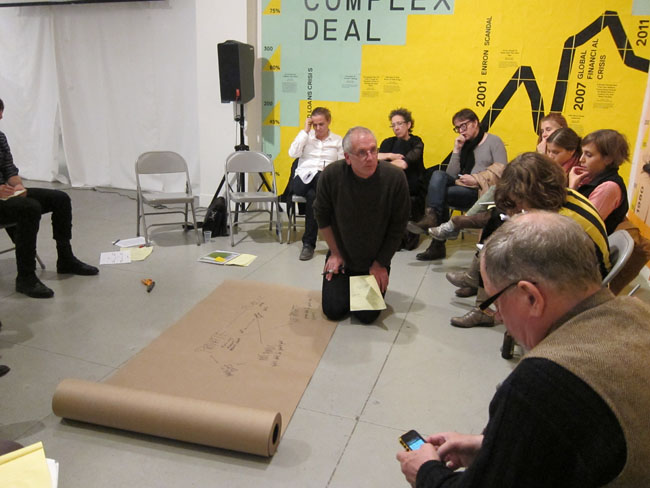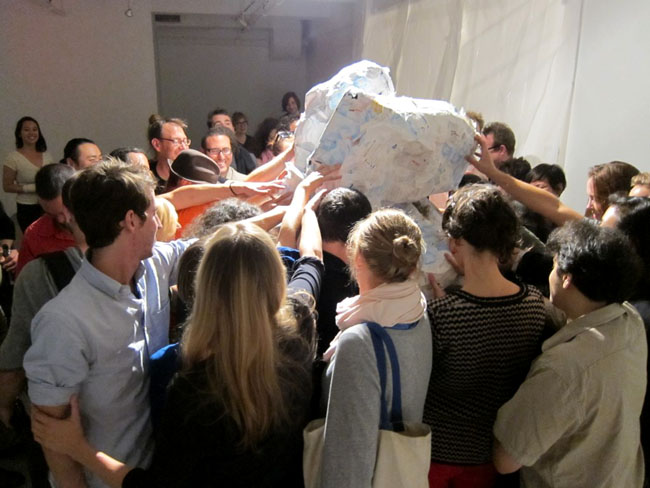To Have and To Owe
September 21—October 27, 2012
Organized by Leigh Claire La Berge & Laurel Ptak with assistance from designer Eric Nylund & intern Gina Bull
Arts & Labor
Richard Dienst
Jennifer Flores Sternad
Fran Ilich
Randy Martin
Annie McClanahan
Occupy University
Cassie Thornton
Caroline Woolard
Infographics by Brendan Griffiths, Zak Klauck & Mylinh Trieu Nguyen
From September 21–October 27, 2012, EFA Project Space in New York City will present To Have and To Owe, a research platform and event series for thinking about debt. Focused on the social relations that debt engenders, To Have and To Owe has invited a range of artists, theorists, designers and others to offer lectures, performances, workshops, infographics, discussions, quilting sessions, visualizations, exploring the subject of debt and opening up a space in which its aesthetic and social dimensions may be considered as part of its economic register.
Through live events, cultural production, and online publication, To Have and To Owe seeks to widen discussion on topics including: debt as discipline, money as social medium, re-distributions of wealth, banking crises, debt peonage, credit worthiness, collectivizing debt, philanthropy as debt in reverse, and debtor strikes, among numerous other subjects.
Over the five weeks EFA Project Space will function as a meeting site, reading room and accumulative bulletin board where participants and audience members are welcome to post and distribute diverse visual and textual materials around the subject of debt. Commissioned infographics will provide alternative models to mapping and realizing economic knowledge and a specially-assembled debtors library is open to the public including texts that address debt from theoretical, historical and tactical perspectives.
Of particular interest is the way in which debt has been inscribed as a fundamental mechanism of power and subjugation in contemporary society. While debt is front and center as an issue in both politics and our personal lives, the basis of its control seems directly related to the fact that it is experienced opaquely. Debt exists simultaneously as a form of absence and presence. And though debt is socially enforced it is almost always individually experienced with this fundamental tension rendering it difficult to represent collectively. So what happens if we work towards undoing debt’s unrepresentability? What if we experienced debt as a shared cultural form that is perceptible, communicable, or materialized? How can debt be rendered as a nuanced historical, philosophical, and even aesthetic problem in all of its social thickness inside American life?
EVENTS
Friday, September 21, 6:00pm
To Have and To Owe Opening & Performance by Cassie Thornton
Monday, September 24, 7:30pm
Reading Group
Monday, October 1, 7:30pm
Reading Group
Wednesday, October 3, 7:00pm
Debt & Growth with Andrew Ross
Thursday, October 4, 6:30pm
Lecture: Leigh Claire La Berge & Annie McClanahan
Saturday, October 6, 1:00pm
Arts & Labor Discussion & Quilting Session
Tuesday, October 9, 6:30pm
Research Group: Diego de la Vega Experimental Economies & Finance Group
Thursday, October 11, 6:30pm
Lecture: Richard Dienst
Monday, October 15, 7:30pm
Reading Group
Tuesday, October 16, 6:30pm
Rethinking Your MFA: Looking at Art as the By-Product of Debt
Wednesday, October 17, 7:00pm
A Brief History of Debt Resistance with George Caffentzis
Thursday, October 18, 7:00pm
The Visual Culture of Debt with Nick Mirzoeff
Friday, October 19, 7:00pm
The Aesthetics of Debt Resistance with Yates McKee
Saturday, October 20, 2:00pm
On Municipal Debt with Ann Larson
Saturday, October 20, 4:00pm
Workshop: Communal Debt as Sound
Saturday, October 20, 5:30pm
Performance: Communal Debt as Sound
Monday, October 22, 7:30pm
Reading Group
Wednesday, October 24, 6:30pm
Lecture: Randy Martin
Friday, October 26, 7:00pm
Debt, Desire and Denial with Winter and Nicole Hala, and Pam Brown
Saturday, October 27, 4:00pm
Workshop with Caroline Woolard
By Appointment
Debt Visualizations with Cassie Thornton


